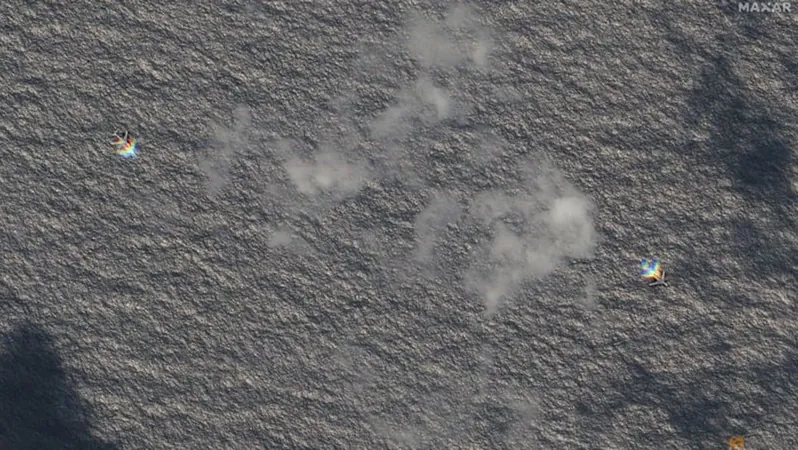
Physicists Achieve Groundbreaking Supersolid State of Light – What It Means for the Future of Quantum Technology!
2025-03-20
Author: Mei
In a stunning breakthrough that has the scientific community buzzing, physicists in Italy have successfully transformed light into a state known as a supersolid. This extraordinary discovery means that light can now behave like both a solid and a liquid, a phenomenon previously thought to exist only in ultra-cold atomic systems.
When we think of light, we often regard it as a fast, massless entity that passes through different materials without much alteration. However, the research team in Italy has boldly altered this perception, demonstrating that photons can now take on a structured, stable form while still flowing freely. The significance of this achievement was highlighted in various credible science news outlets, such as the Economic Times and ScienceAlert.
This innovative supersolid was created by the researchers who cleverly coupled light particles, or photons, with a semiconductor material. This coupling allowed the photons to interact in ways they typically do not, resulting in the formation of hybrid particles known as polaritons that exhibited the uncommon supersolid behavior. Daniele Sanvitto, a lead researcher on the project, stated, “This is the first time a supersolid has been realized with light. The potential applications go beyond fundamental physics—they could transform the way we build quantum devices.”
Understanding Supersolids
In classical physics, we typically divide matter into solids, which hold their shape, and liquids, which flow easily. Supersolids exist in a unique realm where they maintain a crystalline structure while allowing their components to move without friction—a characteristic known as superfluidity. The research marks a significant expansion of our understanding of light phases, showing that photons can create organized patterns akin to those found in structured matter while still exhibiting fluid-like properties.
This groundbreaking experiment builds on decades of theoretical foundations and builds upon prior work with Bose-Einstein condensates, which also exhibit supersolid characteristics at extremely low temperatures. However, the difficulty of inducing interactions among photons made creating this photonic supersolid particularly challenging.
Potential Applications You Never Knew About!
While the excitement is palpable, researchers caution that the journey is only beginning. This discovery holds potential implications for numerous fields, including quantum simulation, advanced precision sensing, and the development of quantum computing technologies. Supersolid light could serve as a new medium to study intricate quantum behaviors and support future devices that leverage coherent and frictionless motion of quantum particles.
Importantly, using light rather than ultracold atoms as the base for these systems opens new possibilities for developing scalable photon-based quantum devices, potentially paving the way for a new era of technology.
A Broader Perspective on the Quantum Frontier
This remarkable discovery comes at a time of increasing global enthusiasm for engineered quantum materials and light-matter interactions, crucial elements for the next wave of computing and communication breakthroughs. Institutions across Europe, North America, and Asia are tirelessly exploring ways to harness and manipulate quantum states of light to create practical, innovative technologies.
Although substantial technical challenges lie ahead before supersolid light can be implemented in real-world devices, this groundbreaking work represents a significant step forward in fundamental physics and quantum research. Prepare for a future where the boundaries of light and matter blur, and technological limits are pushed back further than ever before!




 Brasil (PT)
Brasil (PT)
 Canada (EN)
Canada (EN)
 Chile (ES)
Chile (ES)
 Česko (CS)
Česko (CS)
 대한민국 (KO)
대한민국 (KO)
 España (ES)
España (ES)
 France (FR)
France (FR)
 Hong Kong (EN)
Hong Kong (EN)
 Italia (IT)
Italia (IT)
 日本 (JA)
日本 (JA)
 Magyarország (HU)
Magyarország (HU)
 Norge (NO)
Norge (NO)
 Polska (PL)
Polska (PL)
 Schweiz (DE)
Schweiz (DE)
 Singapore (EN)
Singapore (EN)
 Sverige (SV)
Sverige (SV)
 Suomi (FI)
Suomi (FI)
 Türkiye (TR)
Türkiye (TR)
 الإمارات العربية المتحدة (AR)
الإمارات العربية المتحدة (AR)